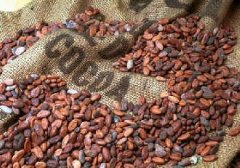Coffee beans can be preserved in the following ways
Especially after multi-layer treatment of low-caffeine coffee beans, oxidation is carried out faster. Therefore, in order to maintain the aroma and quality of coffee, how to package and preserve coffee beans has become a great knowledge. Coffee beans produce a lot of carbon dioxide after roasting, so the packaging of coffee should not only avoid contact with air oxidation, but also deal with the carbon dioxide produced by coffee beans.

Coffee beans can be preserved in the following ways:
1. Gas-containing packaging.
In the most common packaging, beans and powder are packed in glass cans, paper bags or plastic containers, and then capped or sealed. Low preservation, and because of contact with air all the time, need to drink as soon as possible, drinking period is about a week.
2. Vacuum packing.
The packing container (can, aluminum foil bag, plastic bag) draws out the air from the container after filling the coffee. Although it is called a vacuum, it actually removes up to 90% of the air and is not suitable for preserving coffee powder.
3. Gas filling packaging.
A pinhole is designed on the metal bag. After filling the coffee, inactive nitrogen is poured into the bag and the carbon dioxide in the bag is squeezed out of the pinhole. This method is more popular, but after all the gas is discharged, part of the air will be drilled back into the human bag from the pinhole.
4. Packing of gas absorbent.
When the absorbent made from deoxidizer and decarbonization is put into the bag, the air in the package can be easily absorbed, and the carbonation produced by the coffee can also be absorbed, but its disadvantage is that the aroma of the coffee will also be absorbed.
5. UCC Euro packing.
This is the most ideal outer packaging of coffee at present, all in the form of beans rather than powder. It is similar to the pinhole metal bag, except that the gas in the bag can be discharged through the pinhole, while the unidirectional piston can prevent the air from entering the bag. Immediately after the beans are roasted, the coffee manufacturers cool and pack the beans and pour nitrogen into the bag to discharge the gas from the bag. Although this kind of packaging is the most ideal, but the material is expensive and the cost is high. At present, only selected coffee from large companies will use this packaging method.
Important Notice :
前街咖啡 FrontStreet Coffee has moved to new addredd:
FrontStreet Coffee Address: 315,Donghua East Road,GuangZhou
Tel:020 38364473
- Prev

Why do some coffee beans have a shiny surface?
These "oils" distributed evenly on the surface of coffee beans are actually not "oils", but water-soluble organic substances that look like oils.
- Next

Characteristics of Coffee in eight producing areas of Guatemala
Guatemala is a famous producer of high-quality Arabica coffee in Central America. Coffee from five volcanic and three non-volcanic producing areas is very unique and enjoys a high reputation in the international market.
Related
- Guji coffee producing area of Guji, Ethiopia: Humbela, Shakiso, Wulaga
- What is the most expensive variety of Qiloso in BOP multi-variety group?
- How to store the coffee beans bought home?
- Why are Yemeni coffee beans so rare now?
- Ethiopian Sidamo all Red Fruit Sun Sun Santa Vini Coffee beans
- SOE is mostly sour? What does it mean? Is it a single bean? what's the difference between it and Italian blending?
- Is Italian coffee beans suitable for making hand-brewed coffee?
- How to choose coffee beans when making cold coffee? What kind of coffee beans are suitable for making cold coffee?
- Just entered the pit to make coffee, what kind of coffee beans should be chosen?
- Can only Japan buy real Blue Mountain Coffee? What are authentic Jamaican Blue Mountain coffee beans?

